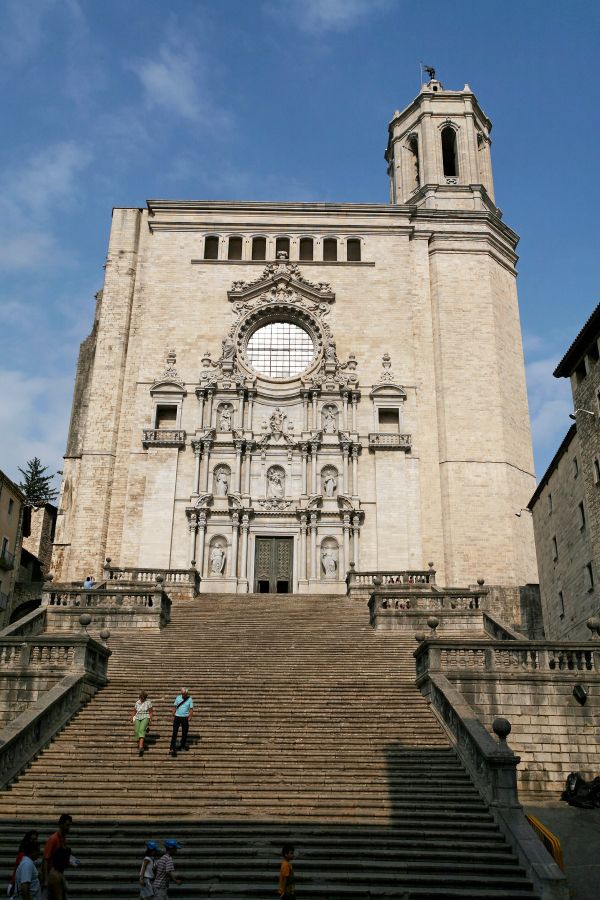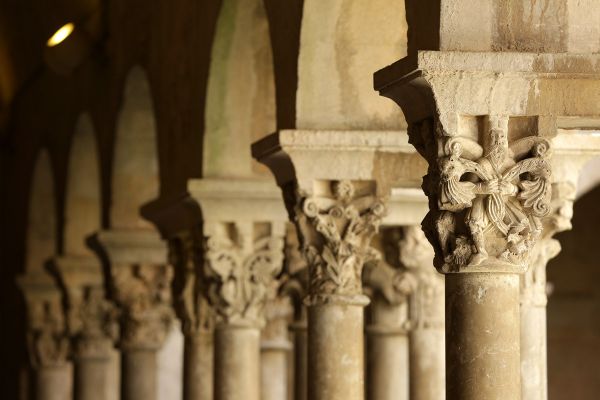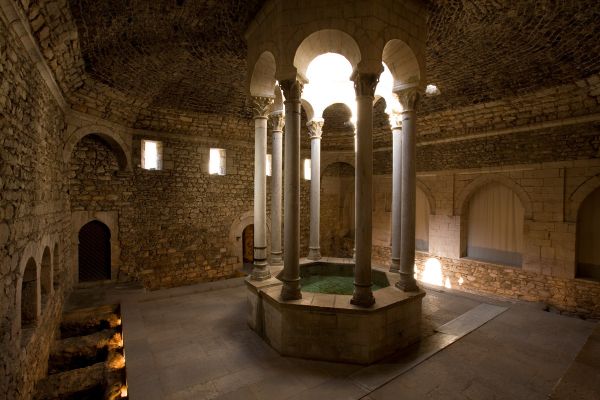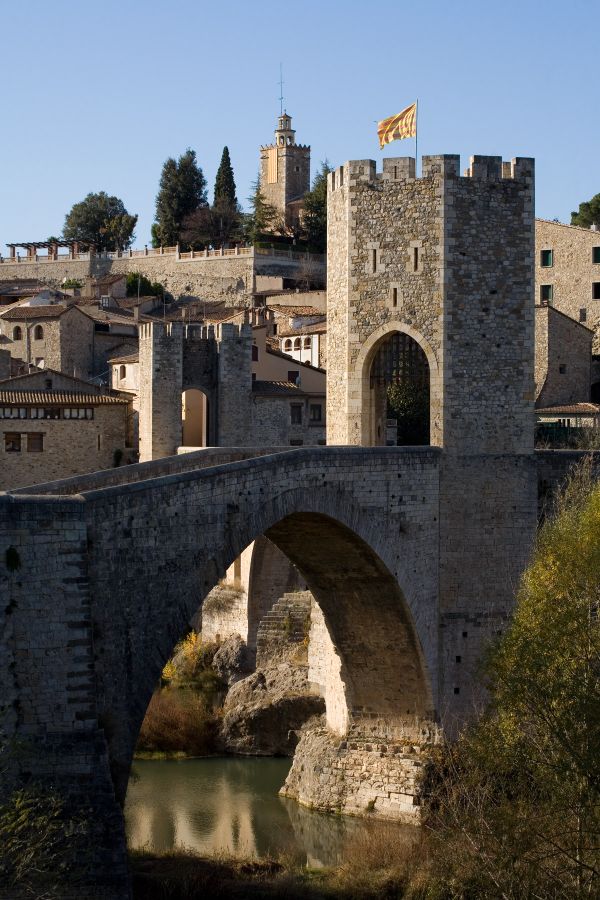The Romanesque art of the interior of Girona is found amongst
large green spaces: between Montseny and Montnegre we discover the monastery of
Sant Salvador, the area in which the village of Breda developed. Amongst the Romanesque details, the 12th century bell tower is noteworthy.
Once in Santa Coloma de Farners, we recommend you to stop at the church of
Sant Pere Cercada. The
Romanesque Farners castle and the
emblematic mountains around it also deserve a visit: the Turó del Vent, the Turó de Farners and the Roqueteres.
MEDIEVAL GIRONAYou immediately notice the medieval flavour of Girona. The Gothic style
Cathedral still maintains Romanesque vestiges such as the
tower of Carlemany and the cloister. It is also home to two of the most significant Romanesque objects:
the Tapestry of Creation and the
Beatus of Girona.
In the monastery of
Sant Pere de Galligants, beyond studying all of the defining Romanesque elements, you can visit the Girona site of the
Museu d’Arqueologia de Catalunya (Museum of Archaeology of Catalonia). Before leaving the city you must visit the celebrated
Arab Baths, a Romanesque locale inspired by the facilities used by the Muslim, or make a trip to
the Devesa, the largest urban park in Catalonia.
HERITAGE AMONGST VOLCANOESThe first Benedictine monastery founded in Spain is located in Banyoles. The monastery of
Sant Esteve is our destination, where today the Neoclassic style prevails over its Romanesque origins.
Besalú is an excellent example of a medieval village; it is impossible to leave without visiting the most emblematic of its elements:
the Old Bridge over the Fluvià river.
The last part of the route passes through rough, broken and difficult terrain: this defines the
Garrotxa. However the natural beauty of this area and its patrimonial richness make up for the hard journey. Around Olot, the
volcanoes and the floral life of
Fageda d’en Jordà... and the only hermitage situated inside a crater: that of
Santa Margarida.
Have we managed to inspire you? If you have any other interesting suggestions please send them to us on Facebook or publish your photos on Instagram with the hashtag #patrimonicultural. 


